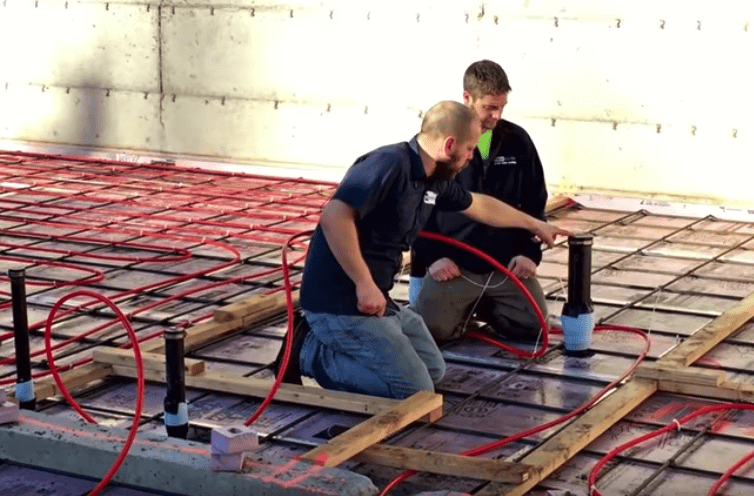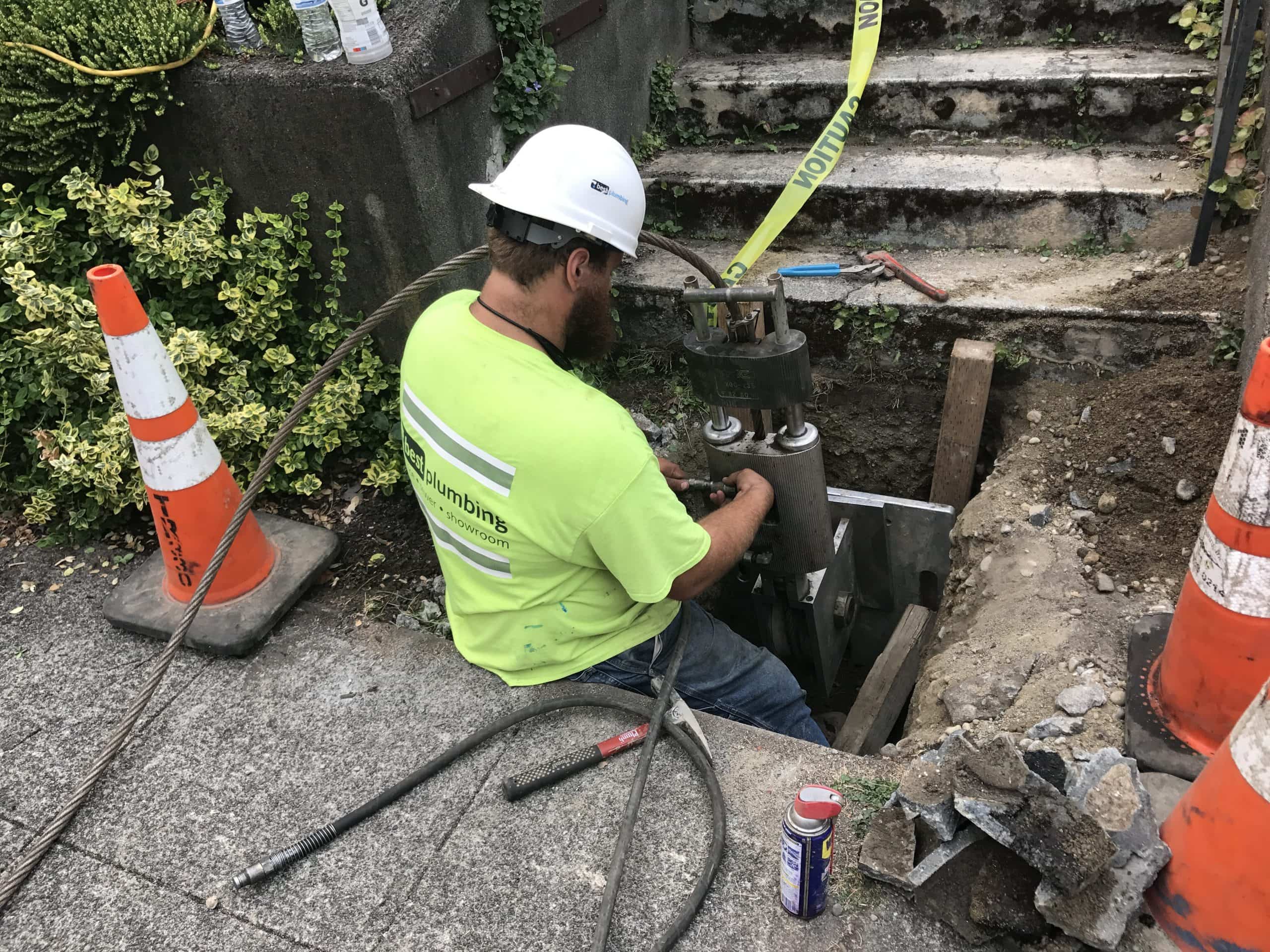PEX Vs. Copper Pipe for Plumbing Projects
PEX and copper are two of the most common materials used for pipes in your plumbing. You may have heard these names before, but do you know which one you should use for a given project? Our experts at Best Plumbing in Seattle are here to share a bit of wisdom about when to use PEX pipes and when to opt for copper piping.
PEX Pipes
PEX, also called crosslinked polyethylene, is a piping material that has become increasingly popular in modern plumbing projects. The material is more flexible than copper or iron, which can make installation easier. When your project requires pipes that need to fit into tight spaces, PEX can be the best option available. PEX is also often faster to install than other rigid materials.
Another great thing about PEX piping is that it lasts virtually forever. Copper and some other materials will eventually leak, which can result in some costly repairs. If your number one priority is longevity, PEX is a great option.
Copper Pipe
Copper piping is commonly used when it’s important that the finished product look nice in a room. This is often the case in boiler rooms, mechanical rooms, or other spaces where the pipe will be surface mounted and visible to the naked eye.
Copper does wear out from a constant flow, and water can erode the pipe’s wall eventually. This can result in expensive repairs if your pipes are difficult to reach. Despite this drawback, copper is a very durable material.
These are just two of the various plumbing pipe materials available on the market today. If you have more questions about which option is right for your project, don’t hesitate to contact Best Plumbing. You can give us a call, or come visit our showroom any time.
If you’re looking for more useful plumbing tips, be sure to read our blog and check out our Youtube channel. Ready to get started on a project? Contact us today!
Best Plumbing: Commercial & Residential Plumbers - Seattle & All of King County Comments: No Comments
Water Efficient Toilets: Help The Earth And Your Wallet
Have you ever considered how much it costs to flush your toilet? They account for almost 30% of water used in the home, making them a significant factor in your water bill. Furthermore, that’s a lot of treated water being flushed down the drain (literally) and this waste can have a long reaching environmental impact. Here is some useful information about water efficient toilets to help you save water and save money!
Water Efficient Toilets
Old toilets often require more than 3 gallons of water per flush. In 1995 things improved significantly when 1.6 gallons per flush became the federal standard. These days, there are high efficiency toilet (HET) models that use 1.28 gallons or less. Some HET models incorporate duel flush capabilities that allow you to use a full flush or a half flush depending on need. Overall, switching from an old toilet to a water efficient model can reduce your household water usage by 20-60%! As you might imagine, this can save you a pretty penny when it comes to your water bill.
Investment and Payoff
Purchasing and installing a new toilet can be a sizable investment, depending on the style, but they pay for themselves over time. According to the Environmental Protection Agency, installing a HET model that uses 1.28 gallons per flush or less can save the average family nearly 13,000 gallons of water a year. This represents more that $110 per year in water savings or $2,200 over the lifetime of the toilet. Keep in mind that the most efficient model can still waste water if it takes multiple flushes to get the job done so it’s important to research what system will work best for your situation.
Not sure what type of toilet is right for your Seattle home or business? Call Best Plumbing! We can help evaluate your current plumbing situation and determine what model might work best for your situation. If you already know what you want, we can also help you install the new toilet in your greater Seattle home
For more useful plumbing tips and tricks, check out our Youtube channel and blog!
Bathrooms | Best Plumbing: Commercial & Residential Plumbers - Leaks, Clogs, Repairs & Installations - Seattle & All of King County, Plumbing Tips | Best Plumbing: Commercial & Residential Plumbers - Seattle & All of King County, Projects | Best Plumbing: Commercial & Residential Plumbers - Seattle & All of King County Comments: No Comments
4 Basic Sewer Maintenance Tips
Sewer backups and overflows are costly and inconvenient. While the Best Plumbing team is always available to help fix your sewer problems, there are small things you can do to take care of your sewer, too. Here are a few basic tips to help you maintain your Seattle area home and prevent sewer backups.
1. Dispose of Grease Properly
Grease is a common cause of sewer blockages and backups. You should never pour cooking oil or grease down a drain or flush it down a toilet. Even if it’s in liquid form when you pour it down the drain, it will eventually cool and solidify, resulting in a blockage in your drain and sewer line. Rather than pouring grease down your pipes, always scrape it into the garbage.
2. Go Easy on Your Garbage Disposal
You should always be careful about what you put in your garbage disposal. You should generally avoid putting any large, fibrous, or tough foods into your disposal, as they can cause damage or clogs. Also, to help prevent food from getting stuck, run cold water down the drain while using your garbage disposal.
3. Take Care of Clogged Drains
If a drain becomes completely clogged, it’s usually best to call in a professional. The Best Plumbing team can remove the blockage and also test the pipe to check for leaks. However, you can also clean your drains once a month to help prevent blockages in your shower, sink, or tub. Start by pouring equal amounts of baking soda and white vinegar down the drain. Then, an hour later, flush it with plenty of warm water.
4. Consider Your Landscaping
Plant and tree roots can cause leaks and blockages in sewer lines. The best way to avoid this is to simply keep trees and shrubs away from your home’s clean-outs and sewer. However, if there are already trees growing near your sewer line, pay close attention to your drain flow. If you notice any significant changes, call a plumber to check the line.
For help checking, maintaining, or fixing your sewer line, contact Best Plumbing! We serve homeowners in the greater Seattle area.
Plumbing Tips | Best Plumbing: Commercial & Residential Plumbers - Seattle & All of King County, Projects | Best Plumbing: Commercial & Residential Plumbers - Seattle & All of King County, Sewer | Best Plumbing: Commercial & Residential Plumbers - Leaks, Clogs, Repairs & Installations - Seattle & All of King County Comments: No Comments



